


HyStrike
High Speed Strike Missile
Fast Hawk
Low-Cost Missile
HyStrike will begin the development of an operational hypersonic weapon that will be fielded in the 2005 to 2012 time frame. A Low-Cost Missile with reduced radar cross-section is to be demonstrated by the US Navy. The surface-launched system could hit underground targets to a depth of 12 meters after flying at beyond Mach 4. The wingless missile would change direction in flight by using a bending body joint. The LCMS concept comprises a fin-less, bending body airframe, fixed geometry annular inlet, and a slip-out booster/ramjet engine. It demonstrates through a series of ground and flight tests the technologies required to deliver a 700-pound payload to a range exceeding 700 nautical miles at a speed of Mach 4.0.
The Office of Naval Research sponsors the Hypersonics Weapons Technology (HWT)
and the Low-Cost Missile (LCM) programs. The HWT Program is investigating
technologies necessary for effective weapon-system operation in the hypersonic realm. The
LCM Program - commonly known as Fast Hawk - is developing an entry-level capability for
a Mach 4 hypersonic weapon. Both of these ONR programs will feed into the Hypersonic Strike (HyStrike) Program sponsored by the chief of naval operations (N88; N87; and N86).
A unique aspect of this Navy programs is that the goal is a single hypersonic strike weapon that will be launchable from air, surface and subsurface platforms. This is a first-time collaboration between these three communities to develop a common weapon system for
time-critical and deeply buried targets. It is intended to produce increased
operations effectiveness as well as life-cycle cost saving.
When fielded, the hypersonic strike weapon is intended to have a major positive impact on battlespace management. The weapon's greatly decreased time to target will give the command, control, communications, computers and intelligence (C4I) components more time to search for and identify time-critical threats. Powerful kinetic penetrators will defeat the enemy's tactic of burrowing deeper or building stronger bunkers. And the ability to take out threat weapons before they are launched will increase US and allied survivability,
efficiently, cost effectively - and soon.
The hypersonic weapon's immense destructive power results from kinetic energy. An object striking a target at Mach 8 will generate 64 times the force of an object of the same mass striking the target at Mach 1. This phenomenon makes hypersonic weapons well suited to attacking hardened or deeply buried targets such as command bunkers or biological-weapon storage facilities.
Aerothermic heating, caused by the friction of air passing the weapon body, is one area of intensive research. At Mach 4, as the hypersonic weapon passes through the lower
atmosphere in the terminal phase of its flight, its surface reaches about 1200 degrees
Fahrenheit. This level is within the tolerance range of new titanium and inconel materials. At Mach 6, however, the surface temperatures exceed 2800 F and at Mach 8 over 5600 F; skin materials, as well as internal temperature control, become a much larger issue.
On 25 March 1997 The Boeing Company received an $8 million contract from the US Navy for the Low Cost Missile System (LCMS) Advanced Technology Demonstration (ATD) program, called Fasthawk. The 36-month program will demonstrate technologies applicable to a next-generation, ship-launched, land attack missile system. The LCMS ATD program is conducted jointly with the Naval Air Warfare Center, China Lake, CA.
The compliance of this system with various bilateral arms control treaties remains an unresolved issue.
Specifications
|
| Mission
| Attack, Destroy, & Hold at Risk Short Dwell
and/or Time-Critical Targets at Long Standoff
Ranges
|
| Range | up to 600 nmi / over 700 nmi
|
|
Average speed | Mach 3.5 to Mach 7
2600 mph - 5200 mph
|
| Features |
- High weapon survivability
- Penetration of 18-36 feet of concrete
- Reactive SEAD
- Day, night, adverse weather operation
- Family of Hypersonic Cruise Missiles
- Neckdown to 1 type of Weapon vice 6 currently
- Minimize cost of ownership
|
| Operational |
2010 IOC
|
| Platforms |
Navy/Shipboard compatible
F/A-18 E/F, JSF, F-22, F-16, F-15E, B52, B-2,B-1,
MLRS,
Surface ships, & submarines
|

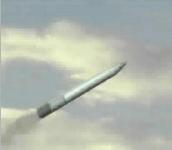

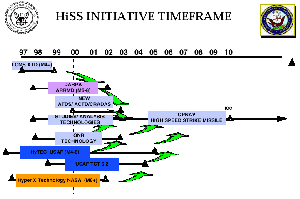
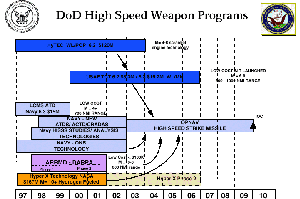
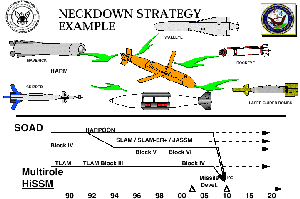
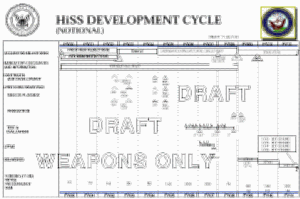

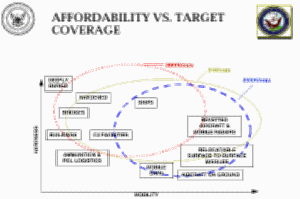
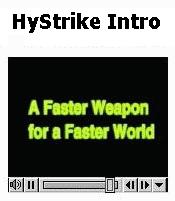
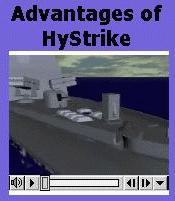

Sources and Resources
http://www.fas.org/man/dod-101/sys/smart/hystrike.htm
Maintained by Robert Sherman
Originally created by John Pike
Updated Sunday, December 27, 1998 10:06:56 AM














